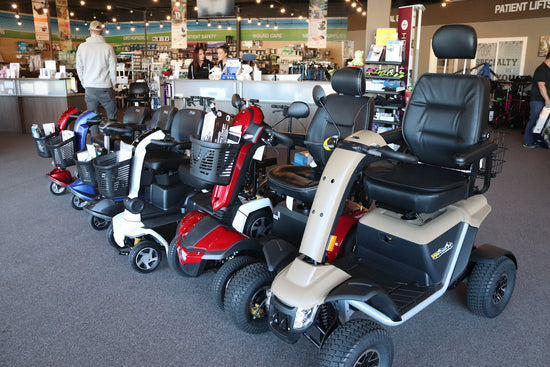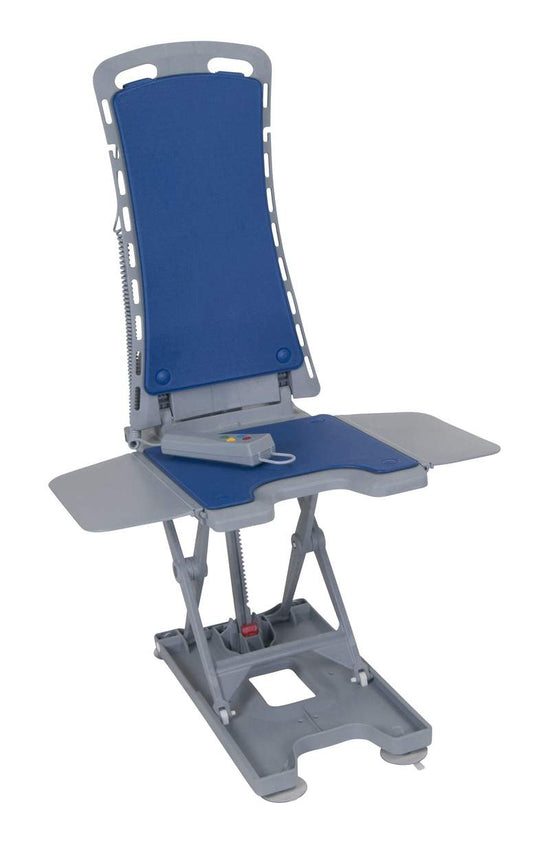Creating a living room that is both accessible and stylish can significantly enhance the quality of life for wheelchair users. An inclusive space should not only accommodate mobility needs but also reflect personal taste and comfort.
This guide will explore practical strategies and design principles to help you transform your living area into a functional and beautiful haven. From furniture arrangements to decor choices, we’ll cover essential tips to ensure your living room is both inviting and accessible without compromising on style.
Understanding Accessibility Needs in the Living Room
Creating an accessible living room for wheelchair users starts with understanding their specific needs. A key consideration is ensuring ample space for movement. Clear pathways and sufficient turning areas are crucial, as wheelchairs typically require at least a 5-foot diameter for a full turn. Furniture should be strategically placed to avoid obstacles, allowing for easy navigation.
Another essential aspect is the height of furniture and fixtures. For instance, seating should be at a height that allows for smooth transfers from a wheelchair. Adjustable or lower sofas and chairs can offer greater comfort and accessibility. Tables and counters should also be at a reachable height, generally between 28-34 inches to accommodate seated use.
Additionally, consider the placement of controls and switches. Light switches, thermostats, and electrical outlets should be positioned within an accessible range, typically 15-48 inches from the floor. This ensures that wheelchair users can easily reach and operate these controls without difficulty.
Flooring choice also plays a significant role in accessibility. Smooth, hard surfaces like wood or tile are preferable over thick carpets, which can impede wheelchair movement. Area rugs, if used, should be securely anchored to prevent slipping or tripping hazards.
Optimizing Furniture Arrangement for Mobility
Optimizing furniture arrangement is crucial for creating an accessible and stylish living room that caters to wheelchair users. The primary goal is to ensure unobstructed pathways and ample space for maneuverability, which enhances both functionality and comfort.
Begin by strategically placing furniture to create clear, wide pathways. It's essential to have at least 36 inches of clearance between pieces to accommodate the width of standard wheelchairs. This spacing allows for smooth transitions and reduces the risk of collisions with obstacles.
Consider the placement of key furniture items such as sofas, chairs, and coffee tables. Position these pieces in a way that maintains accessibility while preserving a cohesive and inviting room layout. For instance, avoid blocking doorways or windows with bulky furniture. Instead, arrange seating areas to foster easy navigation and social interaction.
Height is another critical factor. Ensure that frequently used furniture, like sofas and chairs, is at a height that facilitates easy transfers from a wheelchair. Adjustable or slightly elevated seating can make this process more comfortable. Also, consider using tables with rounded edges to prevent injuries and at a height that wheelchair users can comfortably reach.
Keep essential items within easy reach. Position remote controls, books, and other daily necessities on low shelves or accessible side tables. This minimizes the need for extended reaching or bending, promoting independence and convenience.
Selecting Accessible and Stylish Furniture
When creating an accessible and stylish living room for wheelchair users, selecting the right furniture is paramount. The ideal pieces should blend functionality, comfort, and aesthetic appeal to create a space that is both practical and inviting.
Start by considering the height of the furniture. Sofas, chairs, and tables should be at an appropriate height to facilitate easy transfers in and out of a wheelchair. Aim for seating with a height of 18-20 inches from the floor, which usually aligns well with the standard wheelchair seat height. Adjustable-height options can offer additional flexibility and customization.
Look for furniture with firm cushions and sturdy armrests. Firm cushions provide better support and make it easier to move between a wheelchair and the furniture. Sturdy armrests can offer critical support during transfers, reducing the risk of falls.
Smooth, rounded edges on furniture are also important to prevent injuries. Sharp corners can pose a hazard, especially when maneuvering in tight spaces. Opt for tables and desks with rounded edges or consider adding edge protectors to existing furniture.
Accessibility doesn’t mean sacrificing style. Many modern furniture designs combine sleek aesthetics with accessibility features. Look for pieces with clean lines and neutral tones that can easily blend with various interior styles. Customizable options allow you to select fabrics and finishes that match your personal taste while meeting your accessibility needs.
Additionally, consider multi-functional furniture. Items like lift-top coffee tables or storage ottomans can provide extra functionality without cluttering the space. These versatile pieces help keep essential items within reach and maintain a tidy, organized environment.
Decorating with Accessibility in Mind
Creating an accessible and stylish living room for wheelchair users involves thoughtful decoration that balances aesthetics with functionality. By incorporating accessible design principles, you can ensure that your living space is both beautiful and accommodating to mobility needs.
Start by considering the layout. Opt for open floor plans that allow for easy navigation, ensuring pathways are at least 36 inches wide to accommodate a wheelchair. Arrange furniture to create clear, unobstructed routes between key areas of the room, such as from the seating area to the door or window.
Focus on the height of decorative elements. Wall art, mirrors, and shelves should be hung at a height that is easily visible and reachable from a seated position. Aim to place items at an eye level of about 48 inches from the floor.
Incorporate multi-functional and accessible furniture. Pieces like adjustable-height tables and desks not only add style but also provide practical solutions for different activities. Consider furniture with built-in storage to keep essential items within easy reach, reducing the need for excessive movement.
Lighting plays a significant role in accessibility. Use a combination of overhead lighting, floor lamps, and task lighting to eliminate shadows and ensure the entire room is well-lit. Motion-sensor lights can add convenience by providing instant illumination without the need for switches.
Choose décor that adds comfort and safety. Soft area rugs can enhance the visual appeal of the room, but ensure they are securely fastened to prevent tripping hazards. Select materials that are durable and easy to clean, maintaining a pristine look while supporting a safe environment.
Finally, personalize the space with items that reflect your taste and personality. Accessible design does not mean compromising on style. With a careful selection of colors, textures, and accessories, you can create a living room that is both elegant and fully functional for wheelchair users.
Choosing the Right Flooring for Wheelchair Accessibility
Selecting the right flooring is crucial for creating an accessible and stylish living room for wheelchair users. The ideal flooring should offer a smooth, durable surface that facilitates easy movement while also enhancing the room’s aesthetic appeal.
Begin by considering hard surface flooring options. Materials such as hardwood, laminate, vinyl, and tile are excellent choices for wheelchair accessibility. These surfaces provide minimal resistance, allowing for effortless maneuverability. Hardwood and laminate flooring offer a warm, natural look, while vinyl and tile come in a variety of designs and are often more budget-friendly.
Ensure the flooring is level and free of transitions or thresholds that could hinder movement. If transitions between rooms are necessary, opt for low-profile transition strips to minimize bumps. This reduces the risk of tipping or difficulty in navigating between different flooring types.
Another key factor is durability. Wheelchairs can exert significant pressure on flooring, so it’s essential to choose materials that can withstand daily wear and tear. High-quality vinyl and laminate floors are particularly resilient and easy to maintain.
Consider slip resistance as well. Some hard surfaces can become slippery when wet, posing a hazard. Look for flooring with a non-slip finish or add area rugs with non-slip backing in critical areas. However, be cautious with rugs, ensuring they are thin and securely fastened to prevent tripping hazards.
Comfort is also important. While hard flooring is practical, it can sometimes feel cold or harsh. Area rugs can add warmth and comfort without sacrificing accessibility. Choose thin, low-pile rugs that won’t impede wheelchair movement.
Finally, aesthetics matter. With modern flooring options, you don’t have to sacrifice style for functionality. Many accessible flooring materials come in various colors and finishes, allowing you to create a living room that is both beautiful and wheelchair-friendly.
For more tips and expert advice on making your home more accessible, visit Everything Medical. Their comprehensive resources can help you make informed decisions about creating a safe and stylish living environment tailored to wheelchair users.



